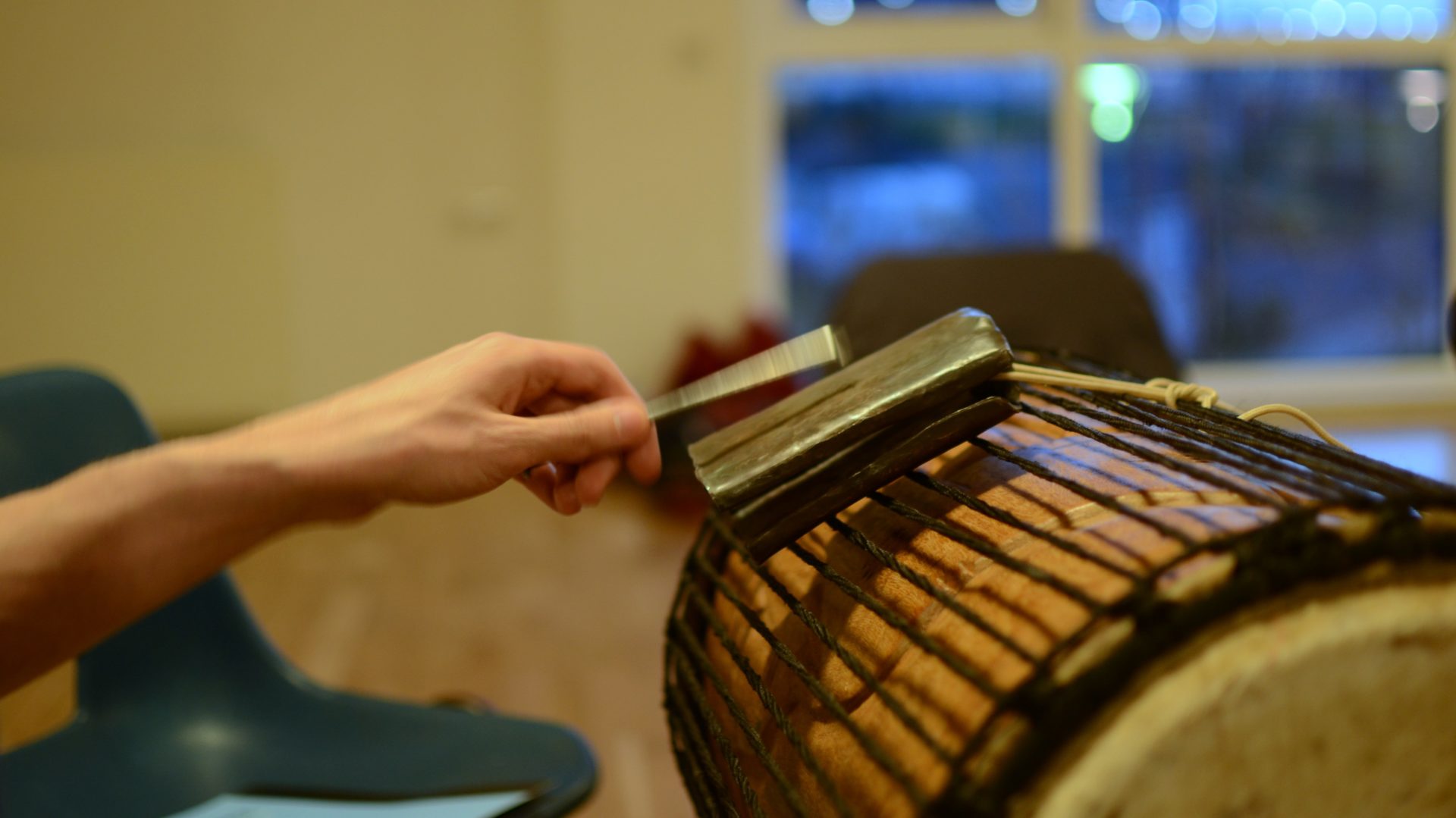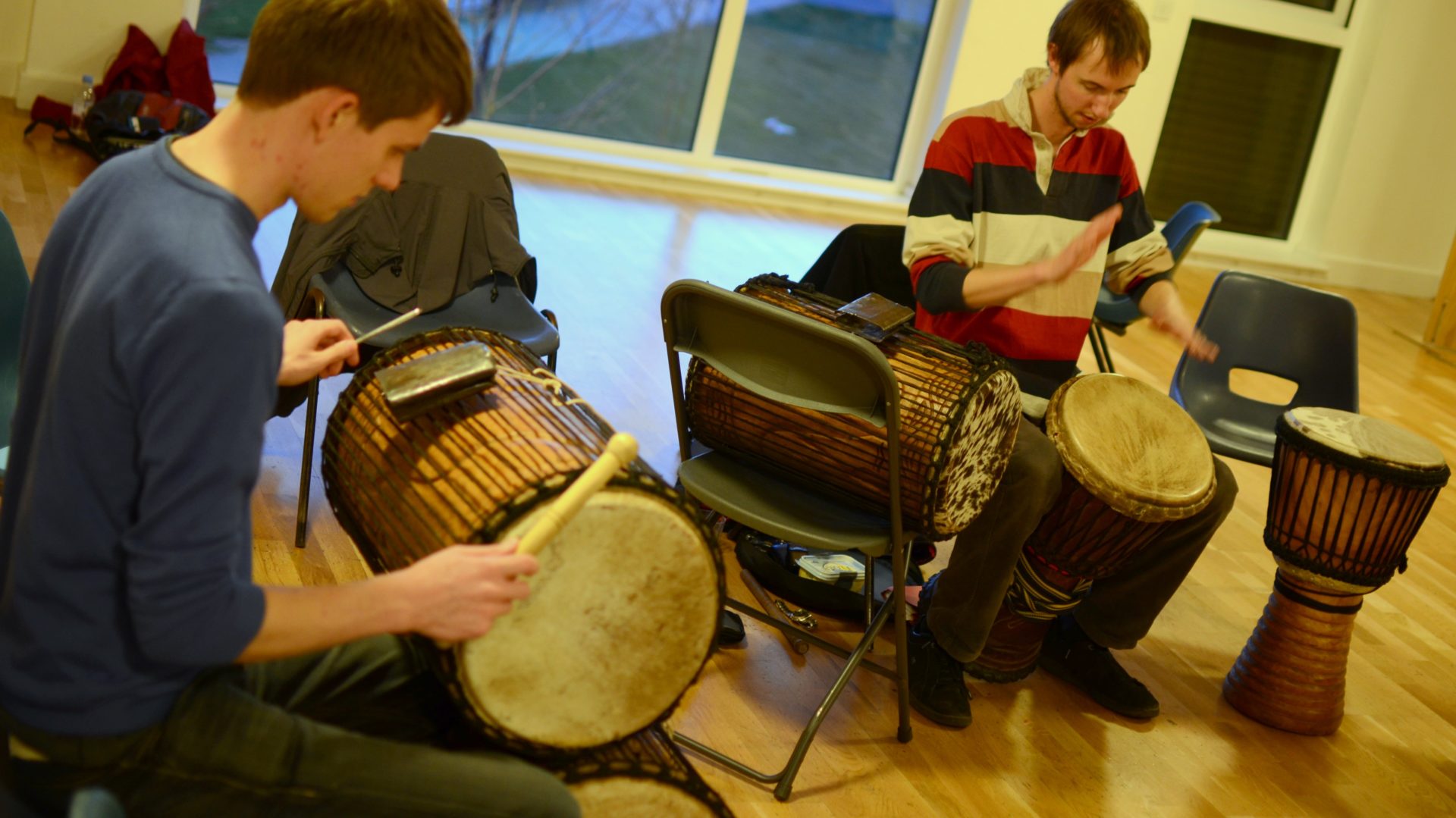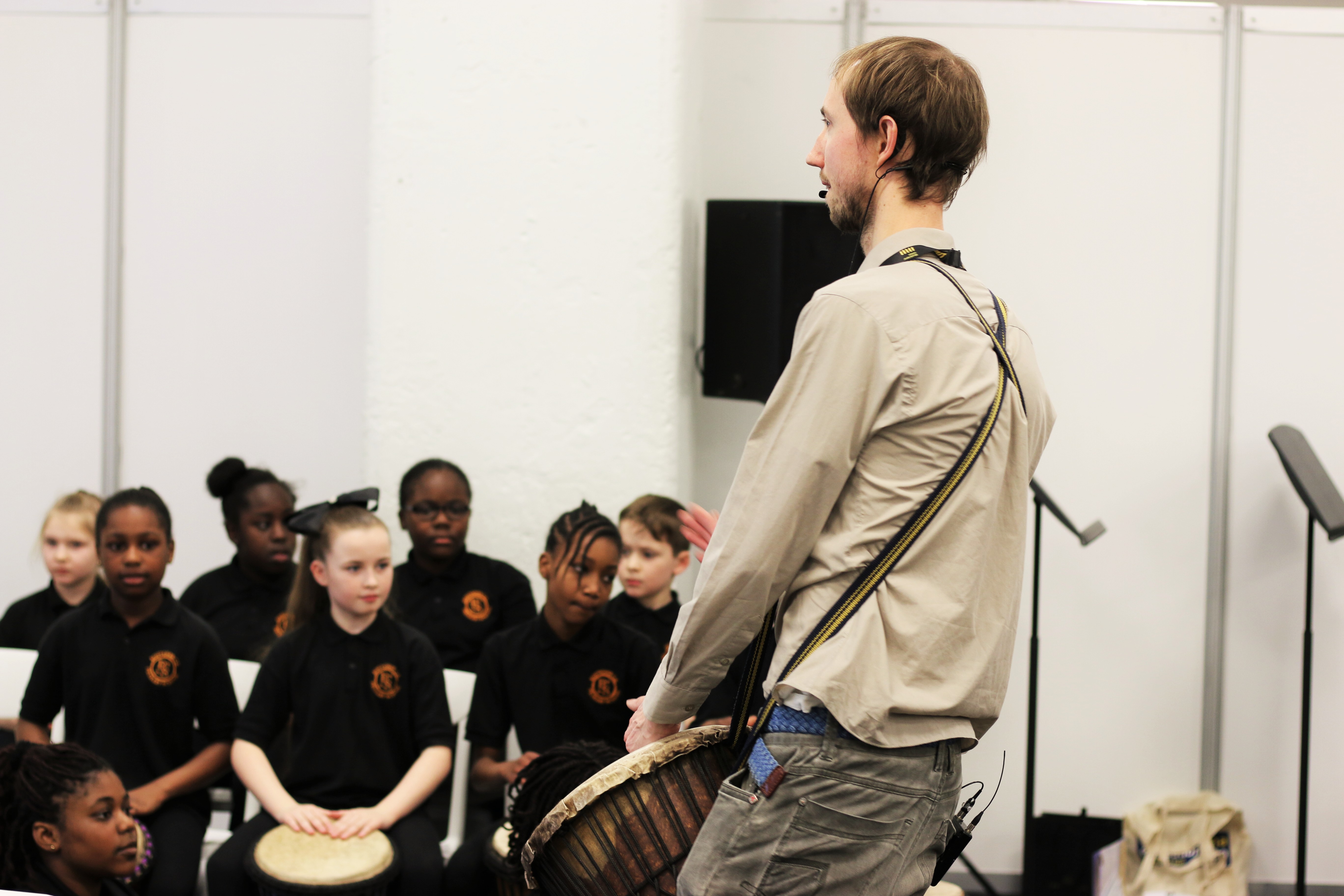An account of Laurence’s experiences in Senegal in September 2011.
J’ARRIVE! 15th September-22nd September
After an eight-hour flight (including a stop-off in Paris) of panic-learning French I have arrived in Dakar! I met Yatma, my host and teacher for the next few weeks, in the chaos outside Leopold Sedar Senghor Airport. I was glad he recognised me before being mobbed by hustlers – all of whom claimed to be my awaiting companion. We attempted to converse on the taxi ride to my new home but it soon became clear that my French is a long way from being ‘up-to-much’. At home I was greeted by Yatma’s wife Amina and two children, Papy and Falu (6 ans et 7 mois respectively), along with a large collection of sisters, uncles, aunts and lodgers.
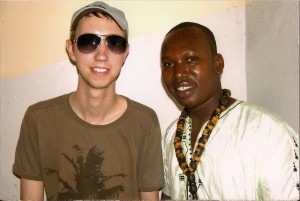
Our flat is on the second floor and very middle-class compared to my previous African living experiences. The running water works 50% of the time, there is a water-closet, a TV, a laptop (for Facebook), and a brand new mattress and fan for me. We had a late dinner, around midnight, from two communal bowls of rice, meat and veg with spicy sauce – one bowl for men and one for women.
Before bed I was able to discuss with Yatma the financial arrangements (Africans don’t skirt around the issue of money) via our in-house translator Ameth, Yatma’s brother-in-law with a good grasp of English.
The following day, 98000 CFA lighter, I had my first lesson in Sabar drumming. Sabar is central to all things in Senegal. Festivals, funerals, sporting events, TV adverts and (most of all) ‘bachelorette’ parties all include their national rhythm and dance. Children sing long drum breaks while rehearsing the dance moves in the street. Since arriving I have learnt that it has a tricky ingrained lilt to it – but Yatma appears pleased that I’m able to pick it up relatively quickly.
During the week I’ve followed my professeur’s every move- playing sabar and tama drums for a street party in Thies (3 hours drive from Dakar), practising with his father Assane Thiam (who played tama for Youssou Ndour) and performing at soirees with some of Dakar’s most famous mbalax artists.
My grasp of sabar drumming is slowly improving, I wish the same could be said of my French!
Sabar drumming
- Goat skin-headed drums with tuning pegs played with one stick and one hand
- 5 types of drum (in varying size) in an ensemble: Talmbet, Lambo, Toungo Ner, Mbembe and Nder
- Men mainly drum and women dance
- Very virtuosic, with varying tempos – mainly very fast!
Tama – a talking-drum. Small and hour-glass shaped with a snake-skin head on either side, it is squeezed under the armpit to vary the pitch. Played with one small stick and a hand.
Mbalax – Senegalese pop music made famous worldwide by Youssou Ndour, fusing elements of traditional sabar music with Western and salsa music.
FOOTBALL, HEN-DO’S AND FAMOUS PEOPLE 22nd September-29th September
Here in Dakar I continue to shadow Yatma’s every move. We’ve settled into a routine of morning lesson (11am start, people sleep late here – suits me!), afternoon relaxing and evening rehearsals and performances. During a wet weekend (it appears I didn’t quite miss the rainy season) we managed to fit in a couple of hen-do’s, a late night soiree performance with top mbalax artist Khamdel Lo and a studio recording a famous current artist Ameth Thiou.
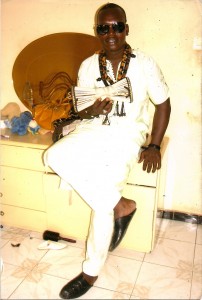
Thiou was recording a Senegalese version of Michael Jackson’s ‘Black or White’. It began like the original, only sung in Wolof, before launching into 5 high-energy minutes of super-tight mbalax groove. It was impressive to see these great musicians (the bassist performs with Cheikh Lo) effortlessly lay down perfectly timed grooves – each player sharing equal responsibility for keeping the time. This is something that is equally noticeable in the sabar performances. Even a super-speed tempos it is evident that every player is feeling the time, rather than listening for it. In the studio, Ameth Thiou greeted me asking if I knew Michael Jackson, before doffing his trademark Jackson-esque trilby and claiming to be the man himself. Later in the week we had another recording session, this time with blind singer Ablaye Mbaye.
On Tuesday morning I was asked if I would like to watch some football – “mais oui!” – so later that day we arrived at a surprisingly large, crumbling stadium. We watched half an uneventful match before drummers began to arrive in our stand. After the match finished, another started immediately. These were local teams from various regions of Dakar, and we were there to watch our area, Bene Tally. As soon as the next match kicked off, the assembled drummers of djembes, dunduns, sabar drums and asheekos burst into a non-stop 90-minute fusion of Senegalese and Guinean rhythms. The atmosphere was pretty primal – with high tension between the two sets of fans: ‘Ashelem 1’ and ‘Ashelem 2’. It wasn’t long before fights broke out in the stands and, after some dubious refereeing decisions, rocks were thrown onto the pitch. All of this seemed rather unremarkable to the spectators around me, and the deafening drumming continued. Thankfully we, Ashelem 1, got a deserved late gasp equaliser to draw 2-2. Yet none of the supporters were happy, and the violence continued. To my surprise I was led to the epicentre of the hooligan activity, under a shower of rocks, in order to sit with the gathering Bene Tally fans for yet another match! Watching 2 and a half games of football is a bit exhausting, and although we won 2-1, my interest was beginning to wane so dramatically by the end that I missed our stoppage time winner as I attempted some French banter with nearby spectators.
I have decided to move on on Monday, when I will travel east to Tambacounda – before heading south for Guinee. Dakar has been great: great hospitality from Amina and co, great music and great lessons from Yatma. However it is too expensive for me to stay here much longer so I must embark on the next leg of my trip!
Wolof – the tribe which make up nearly half of the Senegalese population. Although the official language of Senegal is French, most converse in their native tribal languages, most commonly Wolof.
Asheeko – A square frame drum, with a goat skin. Held out diagonally in front of the player and played with both hands.

